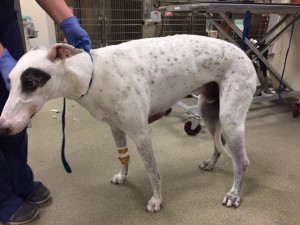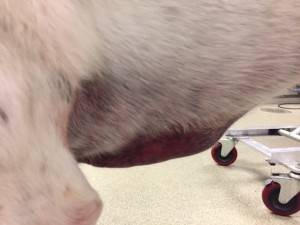-
Recent Posts
Archives
- October 2022
- August 2022
- May 2022
- March 2022
- January 2022
- December 2021
- September 2021
- July 2021
- June 2021
- May 2021
- April 2021
- February 2021
- January 2021
- November 2020
- October 2020
- September 2020
- June 2020
- April 2020
- March 2020
- February 2020
- January 2020
- December 2019
- November 2019
- October 2019
- September 2019
- June 2019
- March 2019
- February 2019
- January 2019
- December 2018
- November 2018
- October 2018
- August 2018
- July 2018
- June 2018
- May 2018
- April 2018
- March 2018
- February 2018
- January 2018
- December 2017
- November 2017
- October 2017
- September 2017
- August 2017
- July 2017
- June 2017
- May 2017
- April 2017
- March 2017
- February 2017
- January 2017
- December 2016
- November 2016
- August 2016
- July 2016
- June 2016
- May 2016
- April 2016
- March 2016
- February 2016
- January 2016
- December 2015
- November 2015
- October 2015
- September 2015
- August 2015
- July 2015
- June 2015
- May 2015
- April 2015
- March 2015
- December 2014
- June 2014
- May 2014
- April 2014
- November 2013
- September 2013
- August 2013
- July 2013
- June 2013
- May 2013
- March 2013
- January 2013
- November 2012
- October 2012
- July 2012
- December 2011
- November 2011
- October 2011
- September 2011
- August 2011
- July 2011
- June 2011
- May 2011
- April 2011
- March 2011
- February 2011
- January 2011
- December 2010
- November 2010
Categories
NorthStar VETS Cool Case Mo
The team at NorthStar VETS is doing innovative and amazing things every day as they work to advance the level of care available to your pet. This series of posts highlights cool cases at NorthStar VETS and the types of things done to save pets and improve their quality of life. These are cases using innovative and cutting-edge medical techniques, and/or stories of pets beating the odds. This is the story of Mo, a patient of our Emergency and Critical Care team.
 About Mo
About Mo
Mo is a 7-year-old neutered male Greyhound who has a history of epilepsy and takes medication for seizure control. One evening he had a seizure, fell, and hit his left hind leg causing a large bruise, swelling, and lameness of that leg. He was treated with pain medications, but returned and had to be hospitalized due to pain and progressive swelling and bruising. Mo developed severe bruising that progressed from his left hind limb, to his right hind limb, to his belly and chest, and to his right front limb.
Mo’s condition
Mo developed a condition known as hyperfibrinolysis, a problem Greyhounds are recognized to get. This is a problem where the clotting system becomes activated by bleeding or trauma, but the balance of clot formation and clot break-down/clot regulation become out of balance, and there is excessive clot break down. This excessive clot break-down leads to severe bleeding and bruising. The body continues to try to form a new clot, so this also uses up clotting factors, as the body forms new clots they also get broken down, leading to a cycle of perpetuated bleeding and bruising.
 Mo’s treatment
Mo’s treatment
Mo received aminocaproic acid injections. This is a medication that inhibits the activation of plasmin, which is the main enzyme involved in clot breakdown. Mo needed increasing doses of aminocaproic acid until he showed signs of responding. He also received plasma transfusions (the liquid component of blood that contains clotting factors) to replace all the clotting factors he had used up in making those blood clots. Some patients bleed so much, they even need red blood cell transfusions due to anemia if there is excessive blood loss.
How things went for Mo
Mo spent 7 days in the ICU receiving his treatments, aminocaproic acid, plasma transfusions, pain medications, sedation for anxiety, and physical therapy. He was discharged when he had no progressive bruising, the bruising was healing, he was comfortable and walking well. He made a full recovery at home and all of the bruising resolved. Mo was a pleasure to work with, and his family was so happy to have him back home!
Greyhounds are frequently blood donors, but in Mo’s case, he was able to benefit from the donors in our program!
Learn more about the Emergency and Critical Care service at NorthStar VETS and learn more about the NorthStar VETS Blood Bank for Dogs and Cats.
 Barbara Maton, DVM, DACVECC
Barbara Maton, DVM, DACVECC
Dr. Maton is originally from Florida, where she earned her undergraduate degree in biology from the University of North Florida, and studied veterinary medicine at the University of Florida, obtaining her DVM in 2006. She completed a rotating internship focused on emergency medicine at SouthPaws Veterinary Specialists and Emergency Center in Virginia, then moved to Pittsburgh where she worked as an emergency veterinarian for two years and completed her residency in the specialty in 2012. After helping to start a critical care service at an established veterinary referral hospital in Delaware, she joined NorthStar VETS in 2014. Her clinical and research interests include trauma, electrolyte derangements, anticoagulant therapies and CPR medicine.
Outside of work, Dr. Maton enjoys spending time with her husband, cooking, gardening, foreign travel, running, cycling and swimming. She shares her home with a possessive bird, two cats, and a lovable mixed-breed dog.
The information presented on this web site is not intended to take the place of your family veterinarian’s advice and is not intended to diagnose, treat, cure or prevent any disease. Discuss this information with your own veterinarian to determine what is right for your pet. All information is intended for your general knowledge only and is not a substitute for medical advice or treatment for specific medical conditions. We can not and do not give you medical advice via this blog. The information contained in this online site and emails is presented in summary form only and intended to provide broad understanding and knowledge. The information should not be considered complete and should not be used in place of a visit, call, consultation or advice of your veterinarian. We do not recommend the self-management of your pet’s health problems.
This entry was posted in Pets, Veterinary Medicine and tagged Barbara Maton DVM, Greyhound, hyperfibrinolysis, NorthStar VETS, Veterinary Emergency and Critical Care. Bookmark the permalink.





Leave a Reply